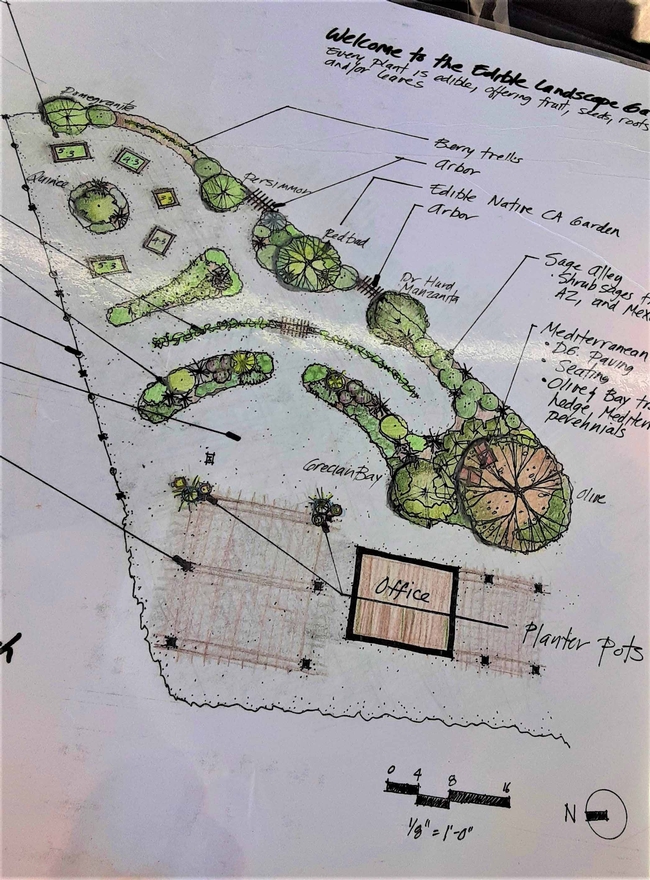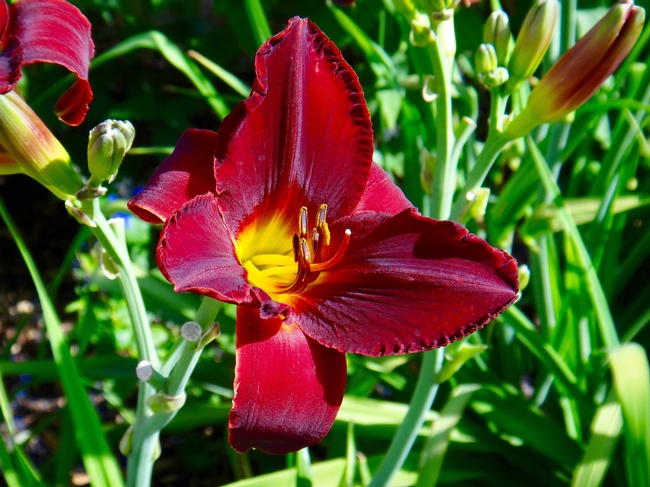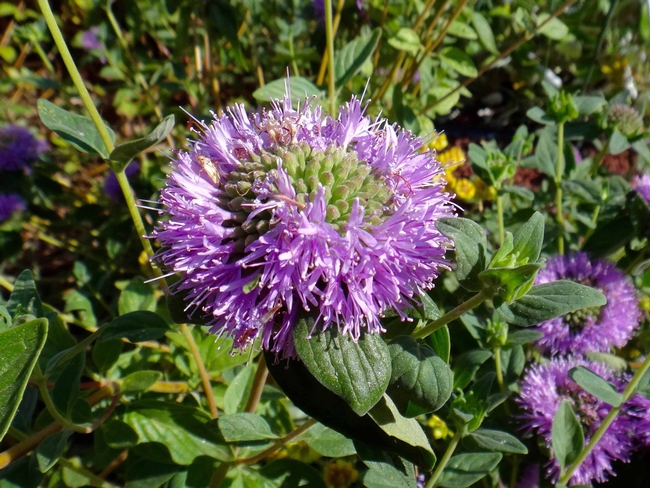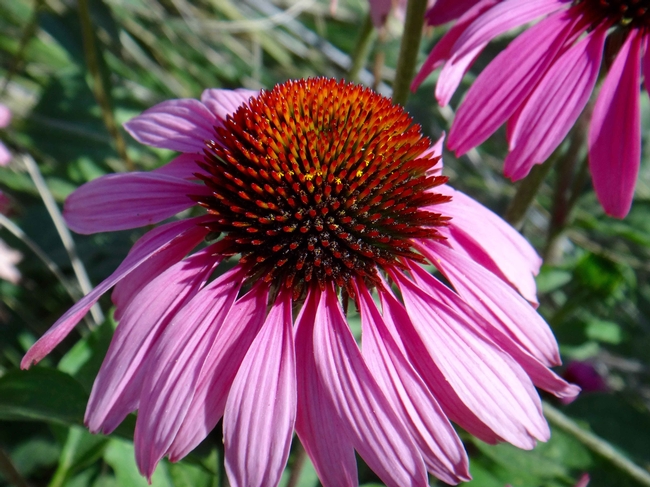An alley of sage plants; an area devoted to California natives; a courtyard plaza for reflection and relaxation; raised beds for vegetables; arbors and trellises covered with berry and grape vines. 
Over thirty types of plants will be featured, from trees and shrubs to herbs and grasses. At least one part of each of these plants is directly or indirectly edible, in the form of fruits, flowers, leaves, roots, seeds, or stems. While this garden will include obvious choices like fruits and berries, it will also feature less apparent species such as redbud, which has edible flowers and seed pods; and purple coneflower, which has leaves and roots that can be used to brew medicinal teas.
The Edible Garden is designed to demonstrate what an average homeowner can accomplish in a backyard setting. Hardscape components will be easy to make or purchase. The arbors will showcase different styles and materials. The trellis supports for grapes and berries will illustrate the main trellis types used by home gardeners.
This garden comprises a variety of areas separated (or joined) by paths, fences, focal points, and structures. The hardscape elements and focus plants will draw the eye and the visitor into and through the garden. For readers familiar with the layout of the Demonstration Garden, the planned Edible Garden flows northeastward from the existing classroom area, and includes additional teaching space.

The mastermind behind the garden plan is local landscape architect Eve Werner. Her design for the triangular space allotted to this garden incorporates concepts of balance, contrast, and harmony, while taking into account the angle and intensity of the sun; the plants growing in the surrounding gardens; and maintenance and irrigation requirements.
Let's take a brief tour of the proposed Edible Garden. We begin by standing at the northeast end of the existing classroom space, facing northeast. The Master Gardeners' office is to the right, and the maturing Espalier Garden is to the left. Behind us is Glenwood Farmhouse and, in the front distance, the Midway running north to south beyond the wheat and pumpkin fields planted each year by the Patrick Ranch Museum.

Grapevines and Arbor: two grapevine trellises echo the curves of the edible annuals, and are separated by an arbor, which will be planted in annual vines. Grape varieties include Champanel, Niabell, Red Flame Seedless, Glenora, Golden Muscat, and Cabernet Sauvignon. Because grapes require a fair amount of maintenance, and the Master Gardeners are a volunteer organization, varieties that mature at different times have been chosen so that pruning and harvesting can be accomplished in bits and pieces.

Sage Alley and beyond: The long leg of the obtuse triangle forming the garden area runs northeast from the plaza. At its southern end lies Sage Alley, featuring shrub sages from California, Arizona, and New Mexico, sprinkled with blue grama grasses. Dr. Hurd manzanita forms the northeastern flank of Sage Alley, and stands at the southwestern side of the second arbor. The arbor itself will support another grape vine. A western redbud stands to the other side of the arbor, amidst plantings of purple coneflower, buckwheat, mahonia, coyote mint, more blue grama grass, and a salvia or two. The third arbor, which will be planted in an annual vine, begins here, and is flanked on the opposite side by a Fuyu persimmon.
Berry Vines: Along the top border of the triangle, trellises will support berries (varieties to be determined). The trellises will be bounded on each side by sages (“Black and Blue” and “Indigo Spires”). A pomegranate tree will mark the end of this edge of the garden.

Asparagus and more: The final element of the Edible Garden plan is an asparagus bed situated between the raised beds and the grapevines. Marjoram, oregano, sunflowers, an artichoke in a pot, and delicately-scented German chamomile complete the plantings.
The garden is designed to have plenty of room for visitors to move between and among the different “rooms.” Although it's not yet planted, the designs and garden teams are in place, and when we are done, we will be happy to invite you in to our Edible Garden. In the meantime, there is already plenty to see at the Demonstration Garden, including the Butte County All Stars Garden, Mediterranean Garden, Berm Garden, Herb Garden, California Native Plant Garden, Backyard Orchard, Espaliered fruit trees, and examples of wildlife habitat plantings and groundcover alternatives to turf grass.
To learn more about UC Butte County Master Gardeners and their upcoming events, and for help with gardening in our area, visit our website. If you have a gardening question or problem, call our Hotline at (530) 538-7201 or email mgbutte@ucanr.edu.